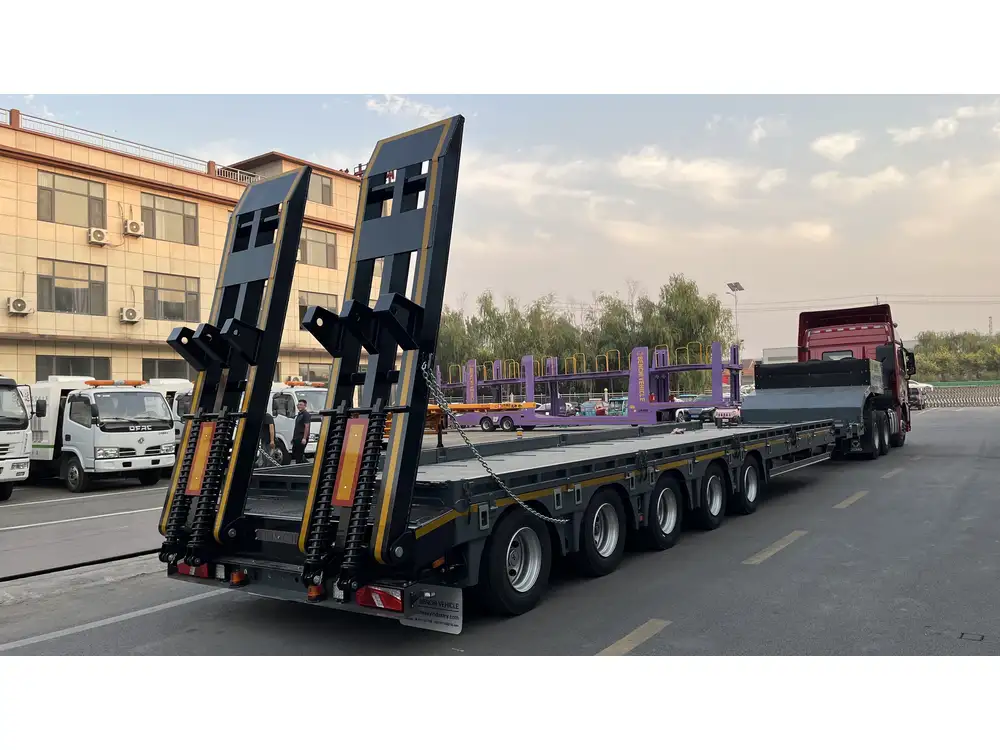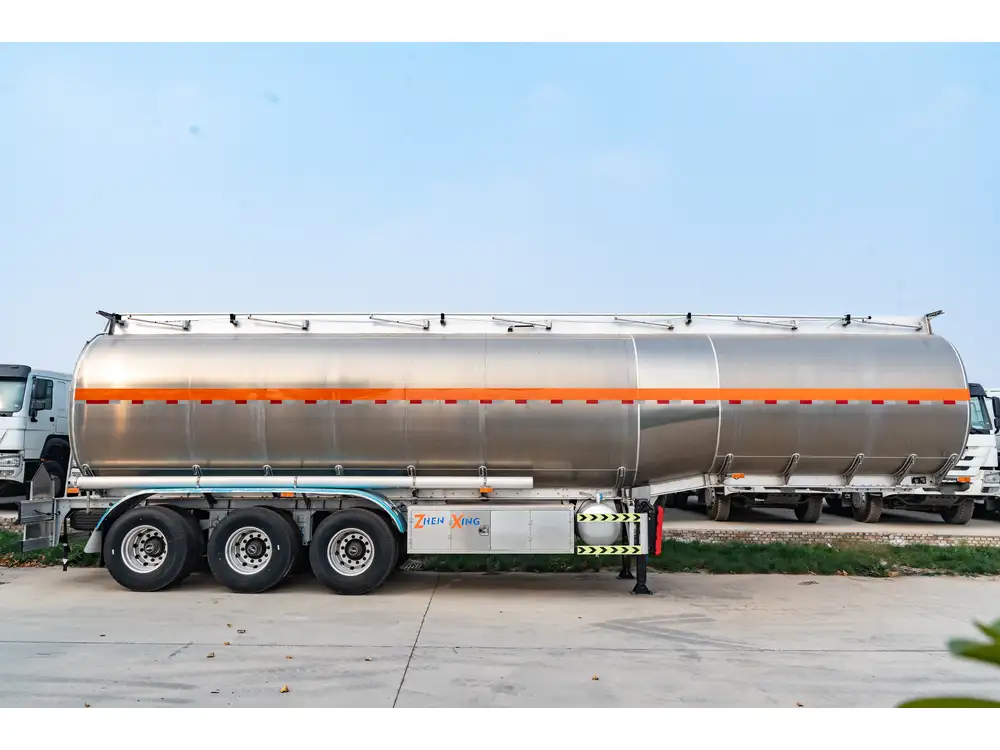Flatbed trailers are an indispensable component of the logistics and transportation industry, renowned for their versatility and capacity to transport a wide array of goods. However, a common question that arises among industry newcomers and veterans alike is: How many axles are on a flatbed trailer? This inquiry delves into specifications that can remarkably affect load distribution, transport capacity, and overall maneuverability. In this detailed exploration, we will unpack the various axle configurations, their implications, and best practices for selecting the right flatbed trailer for your needs.
Understanding Trailer Axles
Before we dive into the specifics of how many axles are typically found on flatbed trailers, it’s crucial to comprehend what axles are and their role in trailer performance. An axle is a rod or shaft that rotates the wheels of the trailer. Essentially, axles can be classified into three primary categories:
| Axle Type | Description | Common Use |
|---|---|---|
| Single Axle | One axle with two wheels. | Light-duty trailers |
| Tandem Axle | Two axles that support four wheels in total. | Standard flatbed trailers |
| Tri-Axle | Three axles supporting six wheels. | Heavy-duty hauling or specialized cargo transport |
Importance of Axle Count
The number of axles on a flatbed trailer directly influences various operational factors including load capacity, stability, and overall handling. As a manufacturer, we understand that choosing the right configuration can greatly enhance operational efficiency.

Common Flatbed Trailer Axle Configurations
1. Single Axle Flatbed Trailers
- Typical Configuration: 1 Axle (2 wheels)
- Load Capacity: Up to 10,000 lbs
- Usage: Ideal for lightweight, smaller loads, often used in landscaping, equipment transport, or small machinery.
Pros and Cons
| Pros | Cons |
|---|---|
| Maneuverable in tight spaces | Limited weight capacity |
| Usually more affordable | Not suitable for heavy loads |
Single axle trailers are easy to handle but have substantial restrictions concerning the weight they can carry. They are best suited for smaller operations that don’t require extensive hauling capabilities.

2. Tandem Axle Flatbed Trailers
- Typical Configuration: 2 Axles (4 wheels)
- Load Capacity: Between 10,000 to 25,000 lbs, depending on the manufacturer.
- Usage: Frequently used in industries where medium to heavy loads are transported like construction, automotive, or freight.
Pros and Cons
| Pros | Cons |
|---|---|
| Better weight distribution | Slightly reduced maneuverability |
| Increased stability while towing | Generally more expensive than single axle |
Tandem axle trailers strike an optimal balance between maneuverability and load-carrying capability, making them the go-to choice for many businesses that require durability and flexibility in transport.
3. Tri-Axle Flatbed Trailers
- Typical Configuration: 3 Axles (6 wheels)
- Load Capacity: Can handle loads exceeding 25,000 lbs, with some configurations allowing up to 40,000 lbs.
- Usage: Ideal for transporting heavy machinery, construction materials, and bulk products.

Pros and Cons
| Pros | Cons |
|---|---|
| Superior load capacity | More complex to manage and maneuver |
| Ideal for oversized loads | Higher initial investment and maintenance |
Tri-axle trailers cater to specialized tasks, particularly suited for industries that frequently transport heavy goods. Their robust construction provides high stability and durability, albeit at the cost of increased complexity in operation.
Selecting the Right Flatbed Trailer Axle Configuration
Choosing the right axle configuration for your flatbed trailer hinges on various factors. Here’s a breakdown to consider:
1. Load Requirements
Evaluate the types of loads you plan to transport. For lighter loads, single axles may suffice. If transporting medium loads or a variety, tandem options are advisable, while tri-axles are best for the heaviest of demands.

2. Legal Considerations
Each state may impose weight limits for vehicles. Consult your local regulations to ensure compliance, particularly with tri-axles, as they are subject to more stringent rules.
3. Terrain and Environment
Consider the terrain where you’ll operate the trailer. Tandem and tri-axle trailers offer more stability in rugged conditions, whereas a single axle performs well on smoother surfaces.
Enhanced Operational Considerations

1. Weight Distribution
Proper weight distribution is critical for safe operation. Uneven loads can lead to tire blowouts and poor handling, particularly with trailers having more axles. Allocating your cargo evenly across the trailer and axles is essential.
2. Maintenance Considerations
Each axle configuration comes with maintenance requirements. More axles suggest increased complexity, necessitating scheduled maintenance checks. This includes inspecting bearings, brakes, and suspension components to ensure safety and efficiency.
3. Turning Radius and Maneuverability
The number of axles plays a significant role in how well a trailer maneuvers, especially on tight turns. Fewer axles mean a tighter turning radius, which is critical for urban driving or navigating job sites.

FAQs About Flatbed Trailer Axles
Q1: How do I determine the right axle type for my business?
Assess your regular load requirements, terrain, and whether you must adhere to specific regulations.
Q2: Are there any safety considerations with different axle types?
Yes, safety translates into proper load distribution, regular maintenance checks, and adhering to manufacturer recommendations regarding weight limits.

Q3: Can I modify my existing trailer to add axles?
While modifications are possible, they may require significant effort and won’t always result in enhanced performance due to potential changes in structural integrity. It’s advisable to consult with a qualified professional or manufacturer.
Conclusion
In summary, understanding how many axles are on a flatbed trailer is pivotal for operations within transportation and logistics. The configuration affects the load capacity, stability during transportation, and manoeuvrability. From single axle trailers suitable for lighter loads to tri-axle configurations designed for the heaviest of shipments, each comes with its unique advantages and limitations.
When selecting the best trailer for your needs, consider not only the capacities and features of different axle arrangements but also your specific business requirements, regulatory landscape, and operating conditions. The right choice will ensure safe, efficient, and reliable transportation for all your cargo needs.
In the ever-evolving landscape of logistics, where reliability and efficiency are paramount, making informed choices about trailer axles could be a game-changer for your business. If you need assistance in selecting the right flatbed trailer or want more information on our various models and configurations, please reach out to us for expert guidance. Whether you need single, tandem, or tri-axle trailers, we ensure the right fit for your operational needs.



